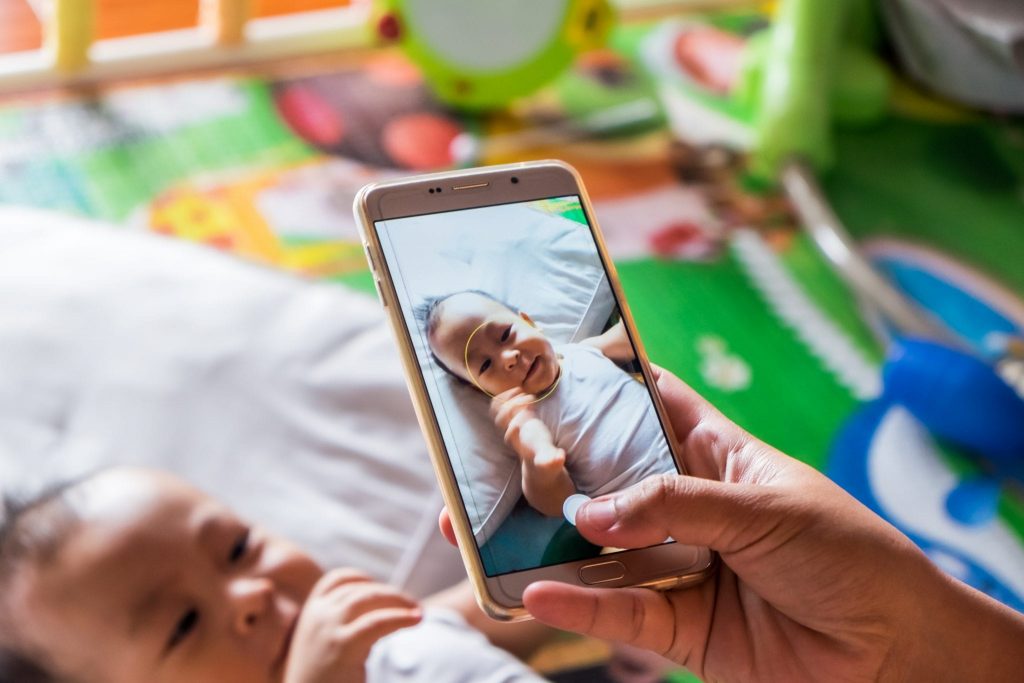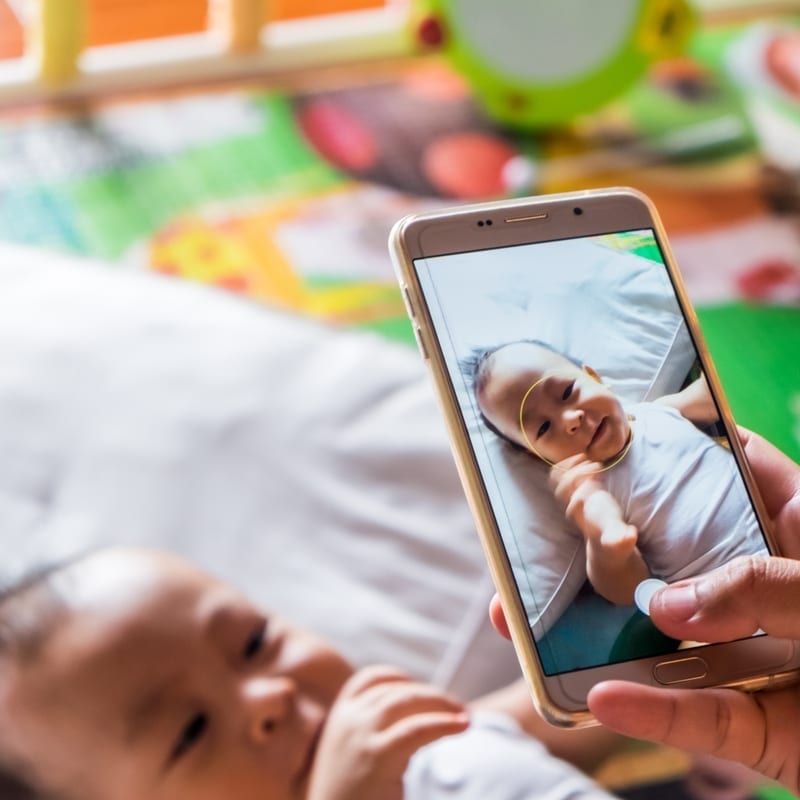Why do parents share or overshare details about their lives and kids’ lives online? It’s a combination of pride, joy, identity and social validation. And without attention to privacy settings, image content and boundary violations, maybe a little thoughtlessness or recklessness thrown in for good measure.

Parents and grandparents have always felt the need to share. Who can forget the pre-digital “Grandma’s Brag Books”? Sharing serves some important functions: 1) it can provide social validation, especially among those for whom having children or grandchildren is culturally a badge of honor or accomplishment, 2) it enables people to appreciate and savor, and 3) it can serve as a means of reinforcing social norms as well as one’s actions and roles. Parenting is hard. We like to know we’re doing it right.
Social media sharing also functions as a repository of images for revisiting images and re-experiencing events or reminiscing. The act of sharing increases “capitalization” or creating greater enjoyment and meaning around events. (One of my graduate students, Olga Valentin, is completing her dissertation examining this very topic.)
Parents often find their life focused on kids once they have them. Sharing can also be a way of normalizing one’s experience as a parent—feeling like you are doing things the right way and reaffirming your identity as a parent.
What is the Impact of Sharing on Kids?
In 2010, 92% of US children had an online presence by the age of two—this is some combination of parents sharing images on their sites and, in many cases, creating Instagram or Facebook accounts for the child (Business Wire, 2010). That was nine years ago. These kids are growing up on Instagram, literally and metaphorically.
As kids age into their tweens and early teens, their sensitivity to image increases and peer acceptance increases as part of their developmental arcs. What seemed fun at 5 years old, my lose some of its appeal at age 10 Some kids feel exposed when they have no control over images that were posted without consent and without consideration for how it makes the kids look to their friends. Some kids are trying to take back control of their images by asking parents to give them veto rights over images they post.
The boundary between parent and child complicates this. Parents share what their kids do as a reflection of their role as a parent. From the parent’s perspective, this may be more about the parent than the child. That doesn’t alter the fact, however, that the images are still of the child. These images are not only posted and shared, they are also permanent and searchable elements on the Internet. If the parents are using Instagram or Facebook, the images are legally the property of Facebook. If they are tagged, they will show up in a Google search. The exceptions to images being permanent and searchable is the use of ephemeral or short-term images shared on Snap and Instagram stories.)
Any impact on self-esteem, however, will not be simply because parents posted on Instagram. It will be the result of a number of social and individual factors, including how parent select and share images, communicate values and demonstrate respect. Let’s face it, parents have always had the ability to embarrass kids in front of their friends. Social media and image sharing, however, have the potential to really amplify the effect.
Things to Think About Before You Share Pictures of Your Kids?
If you want to share pictures of your kids, be sure you understand the privacy settings of the platforms you use and how widely they are sharing. Understand how things like geotagging location allow information to be automatically attached to photos without your explicit knowledge.
Safety comes before sharing. Recognize that there are things that should not be shown, such as anything that gives away personal information, such as standing in front of your house, or any pictures that are in any way sexualized, such as half-dressed children. Parents also need to be able to explain what is okay to be public in a way the child can understand to help the child develop judgment as he/she ages.
Be honest with yourself about your goals for sharing and make sure your posting matches your goals. Are you sharing with family and friends or broadcasting your parenting skills to a larger population?
Think about the messages you are sending your child about privacy, ownership of image and data as well as reliance on others for validation and approval.
Respect your child’s point of view and the social context in which the child lives. It’s one thing to share baby pictures, it’s another to continue to publicly share when the child is navigating their own social relationships as a tween or teen.
Have “The Social Media Talk” Early and Often
Having a conversation about what’s happening on social media is always a good idea as long as it’s age-appropriate. This is not just about sharing but about the safe ways to use social media and live in a digital world. (I recommend Diana Graber’s Raising Humans in a Digital World as an excellent and practical resource for parents!). A four-year-old is not going to understand what it means to have images public. They might understand putting a picture where Grandma can see it, but they won’t understand that, in five years, someone may find a picture and tease them about it. The young child’s understanding of pubic sharing is not only limited, but children will be biased toward sharing because they like to see pictures of themselves. Children also like others to see their pictures as it validates their sense of being. It is the equivalent of the “mommy, look at me!” that is so common among young children. We all want to be “seen.” A problem can occur when the child is mature enough to have a broader social awareness, has friends and is building a life of his/her own with peers, at school and in the community.
The conversation should start when the child is old enough to understand that there is such a thing as an online space and it should continue over time as things change and the child grows. Even when the child takes responsibility for their own images (tweens/teens), conversations should continue about the implications of types of image, searchability, permanence and the impact an old image may have on potential school applications, jobs, and other opportunities. Early conversations can help teens make smarter choices about what to post and not post, too. Image sharing plays an important and positive part of teens socialization in today’s world. Don’t villainize it. Smart sharing is the goal.
Sharenting Writ Large
Getting consent from kids is often problematic because they don’t understand the realities of social media. The publicity that YouTube and Instagram influencers have received paints a lopsided picture of social media that attracts kids and parents alike. A 2019 survey showed 17% of UK kids wanted to be Social Media Influencers and 14% wanted to be YouTubers (Papadatou, 2019). While it’s true that public posting (e.g. no privacy settings in place) can lead to fans and comments, it can also lead to trolls, bullies and worse. Parents have to be clear on the purpose of the posting and not imply that posting is a path to fame and fortune. It’s not as easy as it looks. Nor are the outcomes all positive.
If you choose to post publicly, not just to known friends and family, you need to monitor any site with pictures of your kids to manage the comments and followers.
Parents’ posting behaviors, and the attention and respect they give their children, models behavior that the children will likely replicate when they start posting and sharing on their own. Model the behaviors you’d like to see in your own kids.
Best Practices for Sharing Kids’ Pictures
- Understand privacy settings of what you share
- Never publicly post anything that is sexually provocative or revealing of young children
- Remove any geo-tagging or other location information on images
- Ask children if they’d like to share a particular picture—children have likes and dislikes at a fairly young age
- Be clear why you’re sharing something and keep the welfare of the kids the top priority
- Recognize the social implications of your sharing for your children in their social group once they are school age and be prepared to delete images
- Do not focus on likes or other forms of approval. Explain to your kids that likes are just a click, not real emotion.
References
Business Wire (2010, October 6). Digital Birth: Welcome to the Online World.
Papadatou, A. (2019, January 3). 1 of 5 British children want a career as social media influencers. HRReview.

 Dr. Pamela Rutledge is available to reporters for comments on the psychological and social impact of media and technology on individuals, society, organizations and brands.
Dr. Pamela Rutledge is available to reporters for comments on the psychological and social impact of media and technology on individuals, society, organizations and brands.